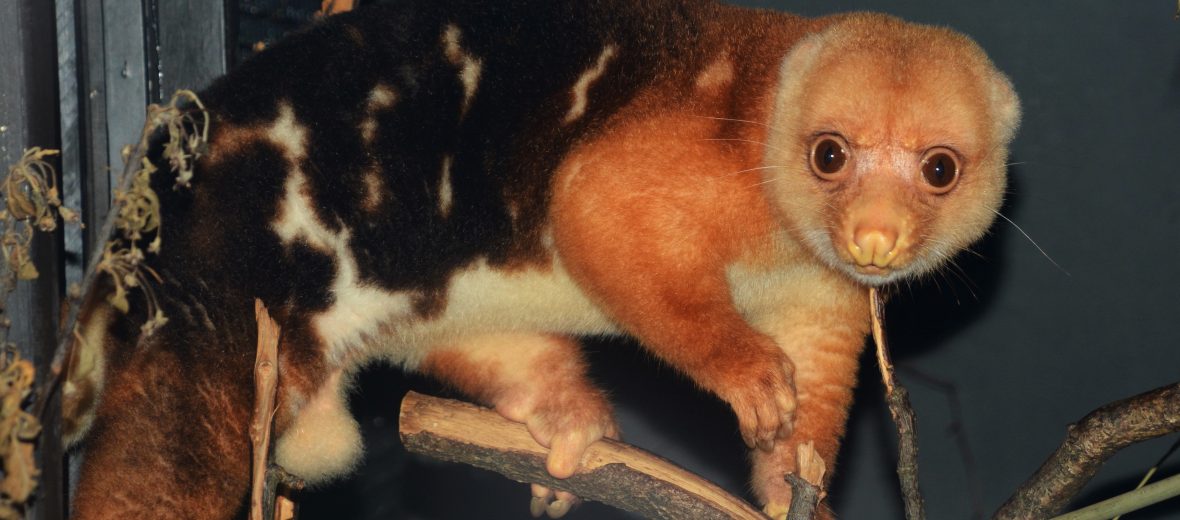
The common spotted cuscus, aka white cuscus, can be found in New Guinea, the Cape York area of Australia, and surrounding smaller islands. They prefer rainforests, hardwood, mangroves, and eucalypt forests. While they are hunted for their meat and skin, and they are threatened with habitat destruction, these critters are still abundant enough to earn the classification of Least Concern by the IUCN. Their populations are currently reported as stable.
First the Stats…
Scientific name: Spilocuscus maculatus
Weight: Up to 13.2 lbs.
Length: Up to 26 inches, plus up to a 24 inch tail
Lifespan: Up to 11 years
Now on to the Facts!
1.) Being very shy, these critters are seldom seen.
2.) They are marsupials (rear their young in a marsupium or pouch).
3.) The common spotted cuscus is nocturnal (active at night).
4.) These creatures are solitary and only come together to mate.
5.) If 2 cuscus of the same sex happen to meet, there will be a confrontation and an inevitable scrap.
But wait, there’s more on the common spotted cuscus!
6.) They are often mistaken for sloths or possums because they are such slow moving animals.
7.) Males mark their territory via a strong, pungent musk that is excreted from their bodies and special glands.
Did you know…?
In the Kalam language of the people of Papua New Guinea these critters are known as “aklang” or “gabi.”
8.) During confrontations, they will snarl, bark, and hiss. They will also stand upright, bite, kick, and scratch perceived threats.
9.) Their diet consists of aglia, alstonia, ficus leaves & fruit, slonea plants, nectar, lithocarpus, and potentially mischocarpus, flowers, and pometia plants. These critters also eat small mammals and sometimes even eggs.
10.) Being polygynous (1 male mates with multiple females) the males will enter nearby female’s territories and breed year round.
But wait, there’s more on the common spotted cuscus!
11.) Females undergo up to a 13 day gestation (pregnancy) that yields up to 3 joeys.
12.) The joeys weigh no more than .04 ounce each and make their way to mom’s marsupium to continue developing for another 6 – 7 months.
Did you know…?
Common predators of these cuscus are pythons, eagles, owls, and humans.
13.) The joeys are reproductively mature at 1 year of age.
14.) Their tail is prehensile (used as an additional appendage). It is furry at the base and scaly towards the underside to aid in better gripping.
15.) Various color changes are gone through by the joeys as they develop. They go from buffs, browns, whites, light greys, and even black colors to their final adult coloration.
Now a Short Common Spotted Cuscus Video!
Be sure to share & comment below! Also, check out the Critter Science YouTube channel. Videos added regularly!
Want to suggest a critter for me to write about? Let me know here.
Photo credit: Jo Kuyken



